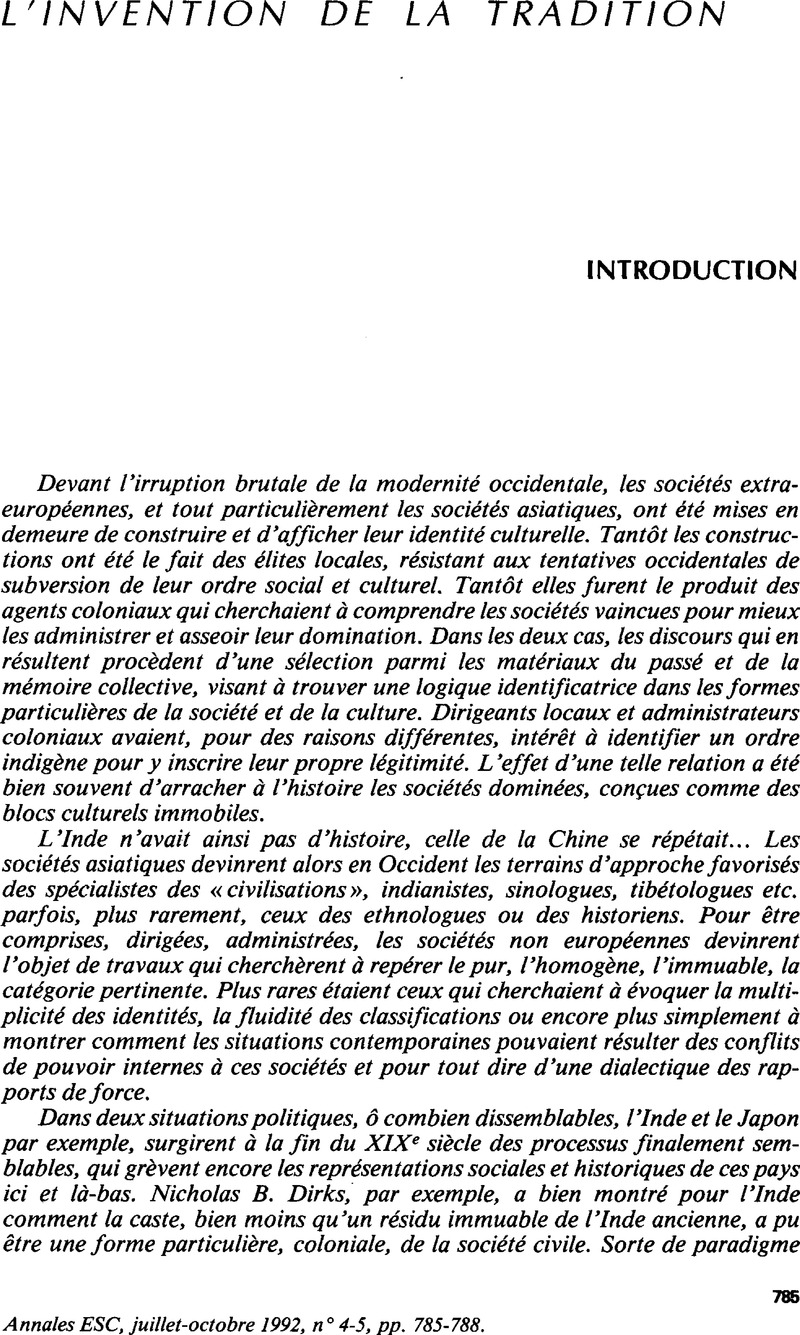No CrossRef data available.

1. Dirks, Nicholas B., The Hollow Crown: Ethnohistory of an Indian Kingdom, Cambridge, 1987 Google Scholar. Cf. également Dirks, N. B. « Castes of Mind », Représentations, 37, winter 1992.Google Scholar
2. kazuko, Tsurumi et Saburô, Ichii eds, Shisô no bôken, shakai to henka no atarashii paradaimu (les aventures de la pensée, nouveaux paradigmes pour le changement social), Chikuma shobô, 1974.Google Scholar
3. Yoshio, Yasumaru, Kindai tennô zô no keisei (La formation de la figure impériale moderne), Iwanami, 1992.Google Scholar
4. Sur les subaltern studies, voir notamment Guha, R. (éd.) Subaltern Studies, Dehli, Oxford University Press, 1989.Google Scholar
5. Noboru, Haga, Minshûshi no sôzô, NHK books, 1974.Google Scholar Cf. Gluck, Carol, «The People in History : Récent Trends in Japanese Historiography», Journal ofAsian Studies XXXVIII, nov. 1978.Google Scholar
6. Hobsbawm, Eric J. and Hanger, Terence (eds), The Invention of Tradition, Cambridge University Press, 1983.Google Scholar